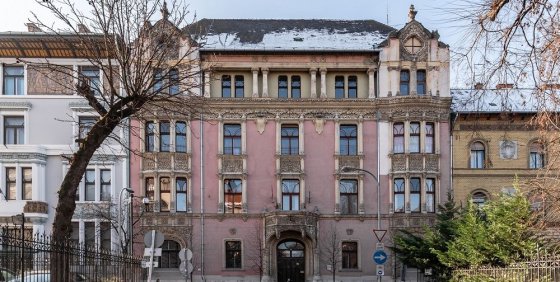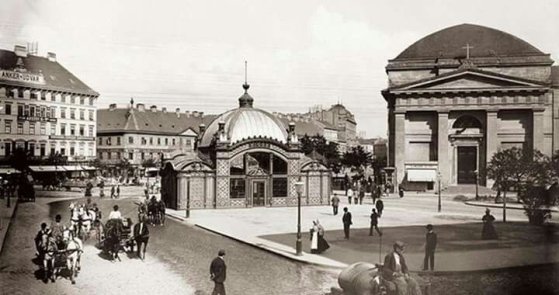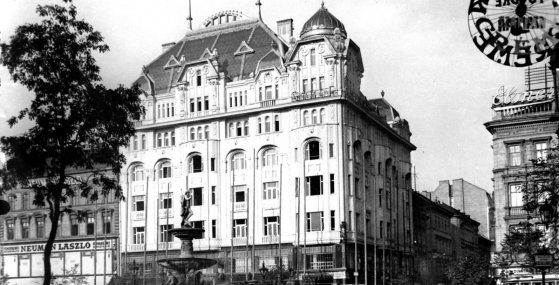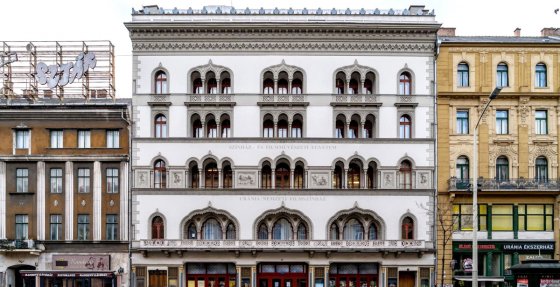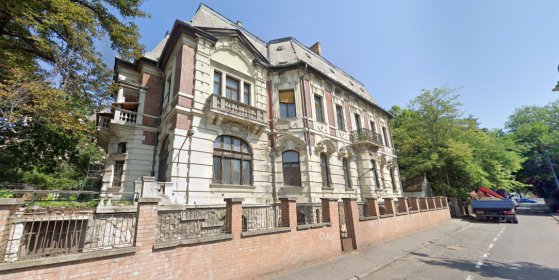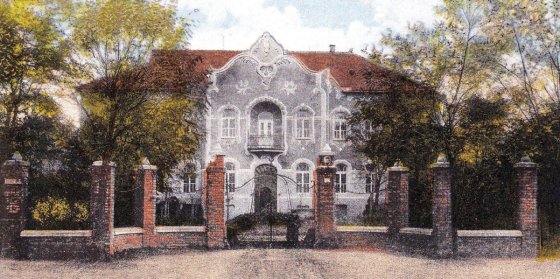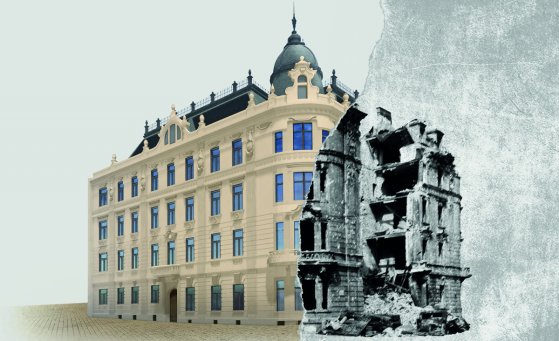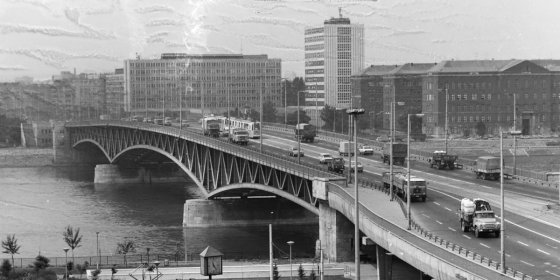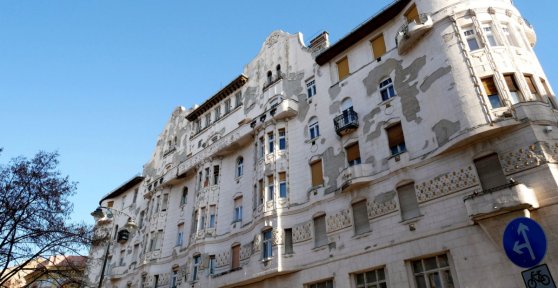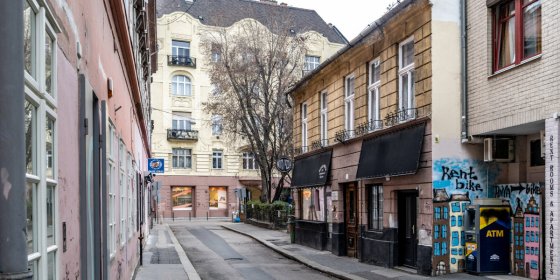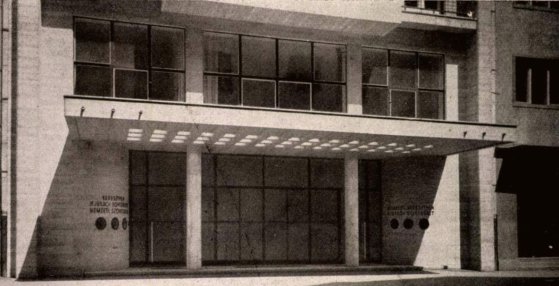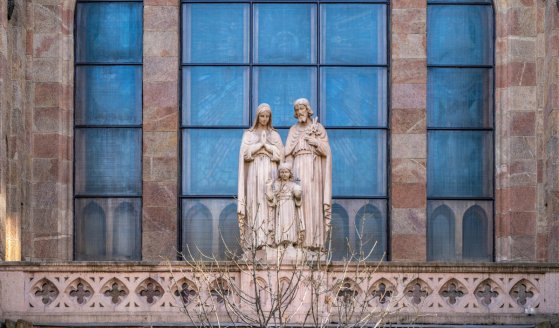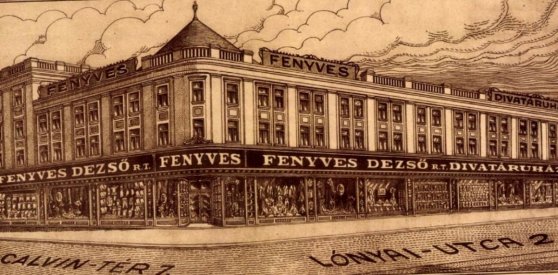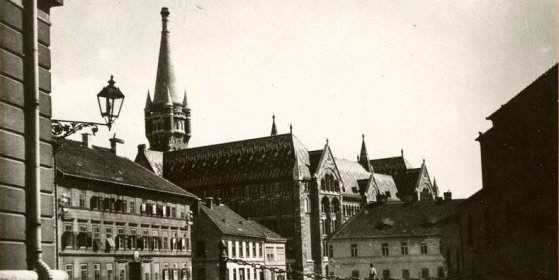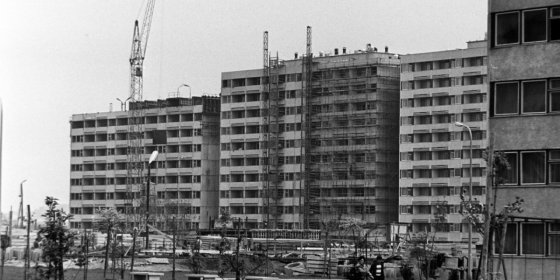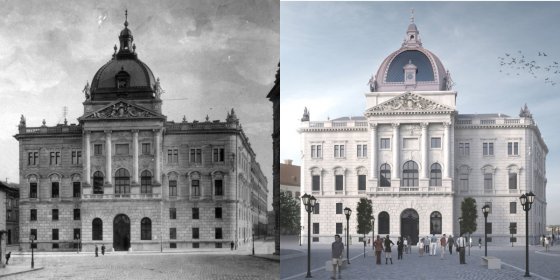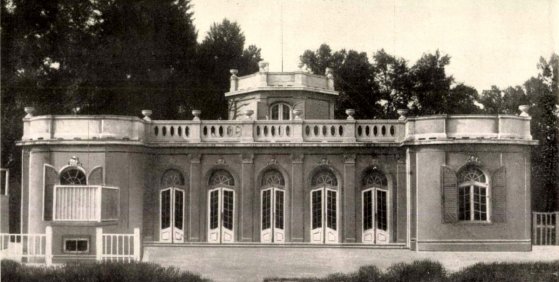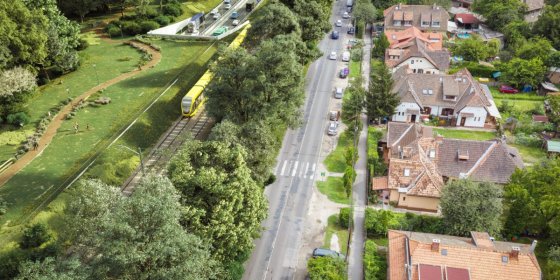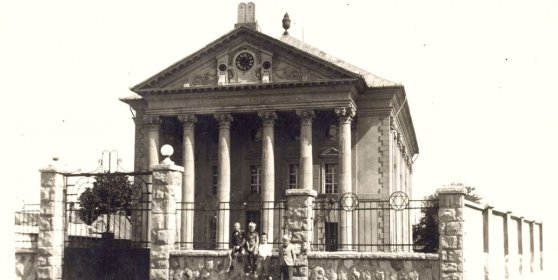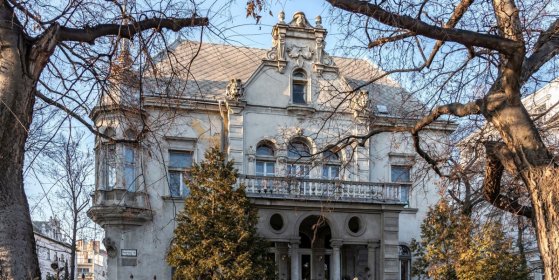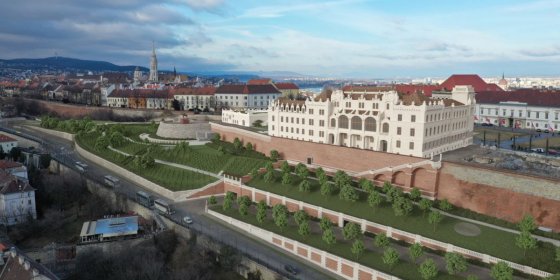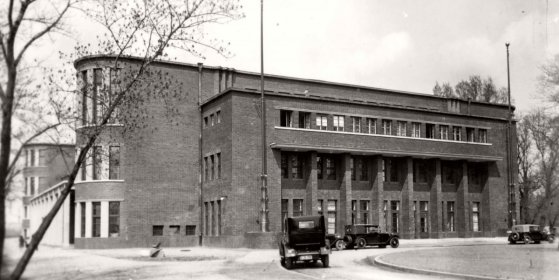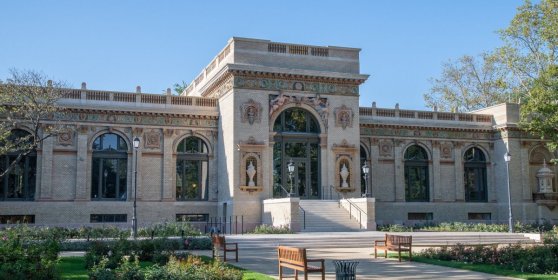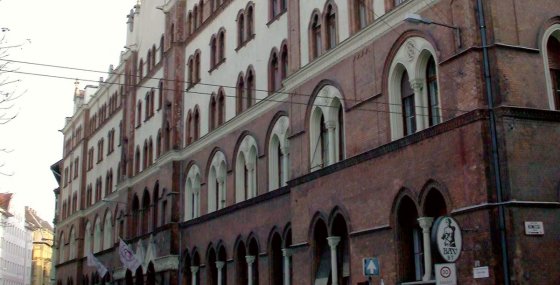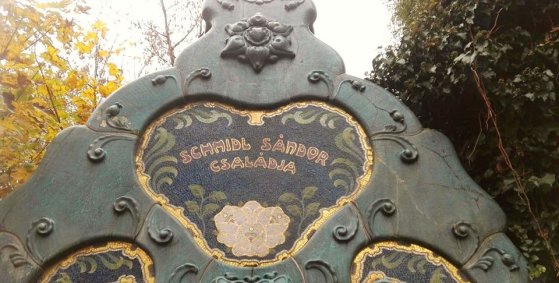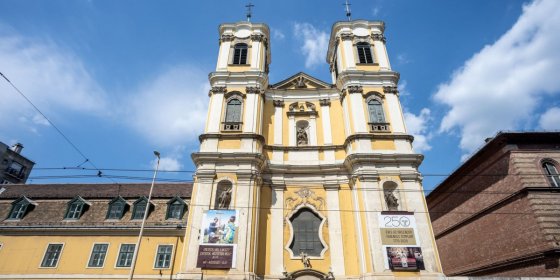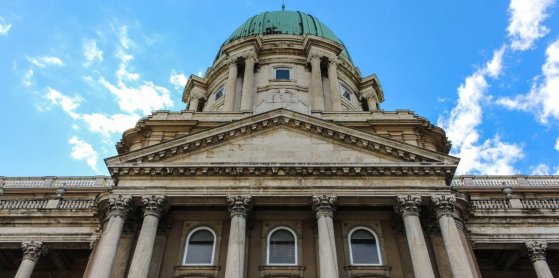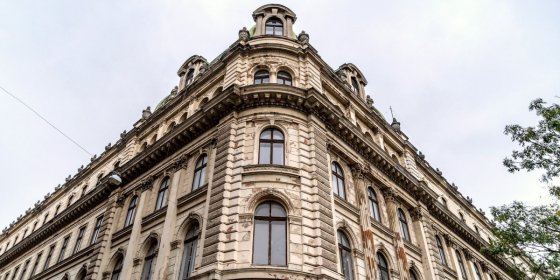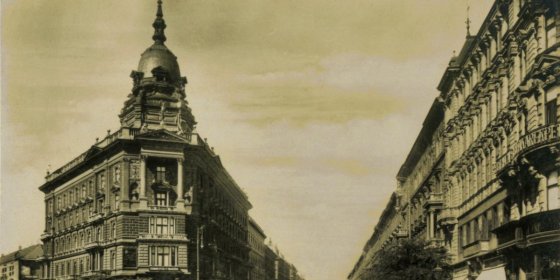 The Bridge Report, which brought a turning point in the history of Budapest
A travel report that changed the history of Pest and Buda, as well as Hungary. The little book contributed to the change of half a thousand years of legal customs and the implementation of an investment of unprecedented size and technical quality. This book was The Bridge Report [Hídjelentés in Hungarian].
The Bridge Report, which brought a turning point in the history of Budapest
A travel report that changed the history of Pest and Buda, as well as Hungary. The little book contributed to the change of half a thousand years of legal customs and the implementation of an investment of unprecedented size and technical quality. This book was The Bridge Report [Hídjelentés in Hungarian].
Architecture
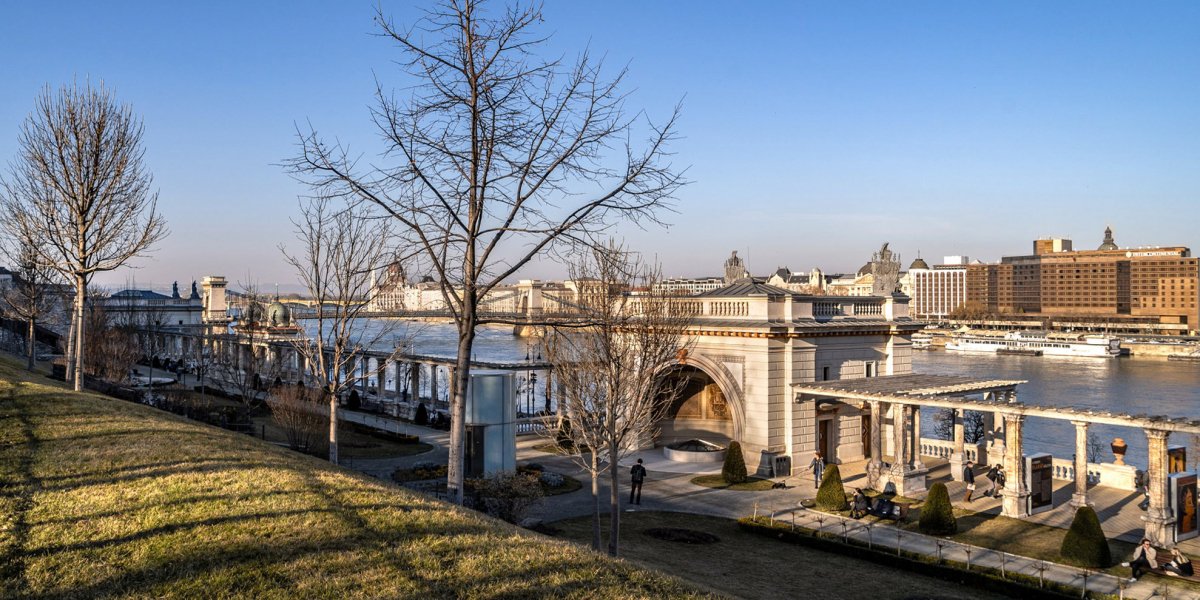 From Triton's Well to Ifipark - The stories of the Castle Garden Bazaar
From Triton's Well to Ifipark - The stories of the Castle Garden Bazaar
March 12, 2021 at 10:00 AM
The Neo-Renaissance garden of the Castle Garden Bazaar was built between 1874 and 1882. It is a worthy pair to any palace garden in the world and houses many details that have exciting stories to tell beyond their beauty: the Triton Fountain, the garden's budding roses, and the medieval curtain wall could each tell hundreds of stories if not sentenced to silence. So let us tell their stories for them.
A Master of Art Nouveau – Remembering Zoltán Bálint
March 11, 2021 at 11:00 AM
Zoltán Bálint was born 150 years ago and played a significant part in redefining Budapest's architecture, but his name is little known today. His prolific oeuvre, his work with fellow architect, Lajos Jámbor, elevates him to an unavoidable position in Hungarian Art Nouveau architecture.
Ornaments for three decades – The entrance halls of the Millenium Underground Railway
March 4, 2021 at 10:00 AM
Continental Europe's first underground railway was opened on 2 May 1896, the first day of the national millennium celebrations, after only nineteen months of construction. The unique vehicle strengthened the character of Budapest as a global city, connected the centre of Pest with City Park. The implementation involved construction not only underground but on the surface: with the exception of the Opera House, an entrance hall was built at the stations. However, these ornate little buildings later fell victim to the “modernisation” of the cityscape.
A forgotten side of Kálvin Square – Lost buildings: The Geist and Pintér Buildings
March 2, 2021 at 9:00 AM
Kálvin Square is a transport hub, one of the busiest and most popular squares in Budapest. Museums, restaurants and hotels fill the nearby streets, but the square itself is also of interest. At the junction of Kecskeméti Street and Kálvin tér, where the huge blocks of the Korona Hotel now stand connected by a bridge, there were once two beautiful residential buildings houses. A look at their history is worthwhile.
From Venice to Moorish ornaments – Uránia National Film Theatre turn 125
February 17, 2021 at 9:00 AM
An iconic building in Budapest and one of the most important works in the oeuvre of the architect Henrik Schmahl has served Hungarian culture and entertainment for 125 years. The unique building with Moorish ornamentation is home to both the Uránia National Film Theatre and the University of Theater and Film Arts. The structure will now be given a new function. With the closing of the Ódry Stage, it will become a theatre for student productions. However, this article will offer a deep dive into the history of this marvellous building and its place in Budapest, rather than the details of a complex reorganisation.
Life after assassination – Róheim Villa, where István Tisza was killed to be restored
February 11, 2021 at 9:00 AM
Near City Park, the eclectic villa building at 45 Hermina Road, completed in 1900, is to undergo a comprehensive renovation. Its facade and roof will be rebuilt, and the lavish but now dilapidated interior restored. A fountain will be installed in the garden and valuable trees preserved.
Sanatorium, hospital and military installation – Art nouveau North Pest Hospital awaits rescue
February 9, 2021 at 10:00 AM
When completed in 1903, the North Pest Hospital – part of Pestújhely at the time – was the only Art Nouveau hospital complex in the country. Opening as the Niedermann Sanatorium, the building later housed a workers' hospital and then became a military complex used by occupying Soviet forces. It was used as the central health institution to serve soldiers stationed in Hungary. The Art Nouveau main building now provides specialist care for outpatients, but most of the more than thirty structures are unused, abandoned and dilapidated – despite nine of them being listed historical monuments.
Reconstruction of the former Red Cross headquarters on Dísz Square to begin in 2021
January 29, 2021 at 9:00 AM
Designed by Alajos Hauszmann and Dezső Hültl, the palace once housed the Red Cross Society, and then the Ministry of Foreign Affairs. The representative spaces of the palace, torn down after World War II, and its façade will be rebuilt according to the original plans. Other areas will be reimagined for the modern age.
Changes planned for the area around Buda bridgehead of Petőfi Bridge
January 26, 2021 at 11:00 AM
Goldmann György Square in the 11th District will be completely transformed. The university is planning to construct new buildings in place of the V2 building and the canteen that have stood empty for years. A zero-emission research centre has been planned for the site. Dive into the history of this unique site with PestBuda!
The future of Gutenberg – Construction of printers' headquarters began 115 years ago
January 25, 2021 at 9:00 AM
The construction of a masterpiece of Hungarian Art Nouveau architecture, Gutenberg House, began in 1906. The residential building that served cultural purposes for several decades is still unique, despite losing much of its charm over the last few years. The sculptures and murals that adorned its facade were destroyed almost 50 years ago, this stunning building would deserve to be restored to its original condition.
Historical buildings avoid destruction in Budapest city-centre
January 17, 2021 at 1:00 PM
In response to recent events, the Prime Minister's Office has ordered the initiation of listing two buildings as historical monuments of Budapest. All work must stop on the Márványmenyasszony ('marble-bride') restaurant in the 1st District, which hosted the weddings of historical figures such as Széchenyi and Wesselényi and the house on Kazinczy Street, which has become known as Tamás Wichmann's pub. Although the future of these buildings remains uncertain, their history is known all the better.
Building of the University of Theatre and Film Arts was once owned by the YMCA
January 14, 2021 at 12:00 PM
The buildings of Budapest hide many secrets. At times, the city can even surprise those who have been researching the history of its buildings for years. In many cases, plaques placed on facades commemorate or highlight interesting details from their history. One such plaque can be found on the facade of 2/C Vas Street, the building of the University of Theatre and Film Arts. The text encourages passers-by to dig a little deeper into the structure's history, by noting that a church once stood within the walls.
Churches of the Holy Family call the faithful in both Buda and Pest
January 13, 2021 at 1:00 PM
On 27 December last year, Pope Francis announced in Rome that the Catholic Church will celebrate a special year dedicated to family love, beginning on 19 March 2021. Discussions about the concept of a family have recently brought the issue to the front of public debates, making the Year "Amoris Laetitia Family" a particularly well-timed initiative in the country. Currently, three churches in Budapest are dedicated to the Holy Family, reminding the faithful that family appeared as a fundamental value and a natural element of human existence at the beginning of Christianity. In preparation for the year of the family, Pestbuda visited the Churches of the Holy Family in Zugliget and Terézváros.
Shop assistants with subscriptions to hairdressers – The Kálvin Square department store
January 8, 2021 at 3:00 PM
The department store is one of Kálvin Square's defining buildings and stands on a plot that once housed a school operated by the Reformed Church. In the interwar years, the city knew the shop as the Fenyvess Department Store. And while it only bore the name for 25 years, many remember the name to this day.
A lookout in the works – Medieval István Tower the inspiration behind tower of the National Archives
January 2, 2021 at 12:00 PM
The National Hauszmann Program recently announced that the destroyed tower of the National Archives' building in Buda Castle would be rebuilt during the building's renovation. Join Pestbuda on a stroll through the history of this iconic tower.
When panel housing defined urban development
December 23, 2020 at 10:00 AM
Forty-five years ago, in the last days of 1975, a new urban planning regulation was adopted in Budapest. The purpose of the provision was to provide an appropriate framework for the construction or housing estates and urban development, while also designating development zones and the number of buildings to be erected.
Rebuilt Headquarters of Hungarian Defense Forces will act as gate to the Palace of Buda Castle
December 22, 2020 at 9:00 AM
One hundred and twenty years ago its massive dome was the pride of Dísz Square. However, for the last 70 years, the military headquarters' partially deconstructed remains have lacked form and function. However, this is set to change. After a partial renovation between 2012 and 2014, its continued reconstruction will begin next year, restoring the building to its former glory, and serving visitors to Buda's Castle District.
Pioneering reinforced concrete – Aladár Münnich born 130 years ago
December 18, 2020 at 2:00 PM
One of the most versatile architects of the interwar years in Hungary Aladrás Münnich designed villas, residential buildings, bank buildings, are large-scale urban planning projects. He was also a popular expert writer. But he is best known for his massive industrial project, both at home and abroad.
"Not on the surface, not in a ditch, or in a tunnel" – Residents protest proposed Pest access roads to Galvani Bridge
December 17, 2020 at 10:00 AM
A petition for the protection of Kiserdő, along Határ Road, was recently taken to the Mayor of Budapest by local NGOs. The petition protests the planned access road leading to Galvani Bridge on the Pest bank of the river.
Synagogue of Óbuda stands as testament to Hungarian Classicism
December 15, 2020 at 9:00 AM
The Óbuda Synagogue is one of the most important historical monuments of the 3rd District and is extremely valuable within Budapest as a whole as well. Nevertheless, it is less well known than its stunning counterparts in Pest, the Dohány Street and Kazinczy Street Synagogues, despite being an immense example of not only synagogue architecture, but also of Hungarian classicist architecture.
A gem on Andrássy Avenue – The Bulyovszky Villa
December 12, 2020 at 6:00 PM
Elegant and spectacular villa buildings line Andrássy Avenue, one of them is the Bulyovszky Villa. The villa was built as a summer house for the famed actress Bulyovszky née Lilla Szilágyi and designed by the young Sándor Fellner. Standing on the corner of Rippl-Rónai Street, the building recently reemerged into the spotlight. The 55% share of the property'S ownership rights, held by the Hungarian Women's Association was put up for auction. The process was suspended in early December, and the Hungarian Women's Association sold its share. The ill-fated villa has thus entered new ownership. Making this the best moment to dive into its past.
Fehérvári Roundel and Western Gardens of Buda Castle to be renovated, new parking garage planned
December 11, 2020 at 10:00 AM
The Fehérvári Roundel and its surroundings are to be demolished and rebuilt to its original size in Buda Castle. One of the main goals of the National Hauszmann Program is to allow visitors to Buda Castle to explore the Castle District by walking around it on its walls. The Fehérvári Roundel plays a major role in enabling this. Following the reconstruction, a previously closed section of the western castle wall will be opened, connecting the roundel to Csikós Courtyard. The western gardens will be revitalised to evoke the vineyards and orchards that once surrounded Budavár. Várgarázs III. will meanwhile further reduce the number of cars parked in the Castle.
Masterpiece of 20th-century Hungarian architecture – National Swimming Pool turns 90
December 8, 2020 at 11:00 AM
The first Hungarian Olympic Champion, Alfréd Hajós was also the man to design the National Swimming Pool, the temple of Hungarian water sports. Standing on Margit island the structure is not only central to sporting life in the country but remains a masterpiece of 20th-century Hungarian archictecture.
Millennium House receives prestigious architecture award
December 4, 2020 at 10:00 AM
Millennium House has received prestigious recognition at the Hungarian Real Estate Development Awards. The renovated cultural institution – one of the oldest buildings in City Park was named best development in the culture category of the awards.
From pawn shop to University – Construction of the Central Pawnbroker Offices began 120 years ago
November 30, 2020 at 10:00 AM
A huge building on Lónyay Street has stood empty for fifteen years. It has been unused for so long that most passers-by will not even remember its name. Yet for more than a hundred years, it was the centre of trading in pledged goods. Over the past years, there have been plans to build a hotel in the walls, films have been shot within them, and there were fears that it would be demolished. In the end, this beautiful example of turn-of-the-century architecture is being saved.
Tradition and Modernity: The sacred art of Béla Lajta
November 26, 2020 at 10:00 AM
In a recent article, PestBuda honoured the memory of Béla Lajta. One of the leading Hungarian architects of the early 20th century, Lajta played a definitive role in the formation of Budapest in the period. Continuing a series in honour of the centenary of his death, join us on a tour of his sacred art in the Jewish cemeteries of Salgótarjáni Street and Kozma Street.
Built in an uninhabited area, houses now surround the 250-year-old Franciscan church
November 22, 2020 at 9:00 AM
Augustinian Friars built the baroque church and monastery in the previously uninhabited area of what is today Buda. In 1785 the complex passed on to the Franciscan Order, who expanded the original building. Residential buildings have since surrounded the Franciscan church. Nevertheless, the walls have survived the vicissitudes of history and continue to offer peace to their community.
Masterpieces with a view – A visit to the Royal Palace of Buda Castle
November 21, 2020 at 9:00 AM
A few secrets from Buda Castle: there is no gas in the building for security reasons; thus, the whole complex is connected to district heating. The current dome reaches higher than the original planned by Alajos Hauszmann. At the turn of the century, the length of the connecting halls facing the river was matched only by Versailles. Pestbuda visited the building before pandemic-related limits on events entered into force, as part of a guided tour offered within the Budai Várséták ('walks in Buda Castle') series of the National Hauszmann Program.
Stunning buildings stand deserted around Budapest
November 10, 2020 at 10:00 AM
The Hungarian capital is filled with beautiful buildings. Houses, public institutions, museums, hospitals, the list goes on. Nevertheless, several impressive buildings that once fulfilled important tasks stand empty in modern Budapest, waiting for a new tenant to return them to their former glory. This list collects five abandoned buildings found in Budapest.
Ten stunning domes lost from the Budapest cityscape
November 8, 2020 at 10:00 AM
Following a recent decision reached by the government, the domes and roof ornaments of buildings may be reconstructed around the country. The first three will be completed within a pilot project in Budapest. This list from Pestbuda collects ten buildings that were once famous for their roofs and which we believe should be among the first to be replaced.
More articles
 The Bridge Report, which brought a turning point in the history of Budapest
A travel report that changed the history of Pest and Buda, as well as Hungary. The little book contributed to the change of half a thousand years of legal customs and the implementation of an investment of unprecedented size and technical quality. This book was The Bridge Report [Hídjelentés in Hungarian].
The Bridge Report, which brought a turning point in the history of Budapest
A travel report that changed the history of Pest and Buda, as well as Hungary. The little book contributed to the change of half a thousand years of legal customs and the implementation of an investment of unprecedented size and technical quality. This book was The Bridge Report [Hídjelentés in Hungarian].
 Drama on the university wall - The heroic monument was planned 95 years ago
In the constant hustle and bustle of the Egyetem Square in Pest, the students may not even notice the monument that decorates the short section of wall between the church and the central building of ELTE. However, it commemorates their predecessors, the heroes who fought for their country in World War I, and those who heroically helped them. The first design of the dramatically collapsing soldier was born in 1928, ninety-five years ago.
Drama on the university wall - The heroic monument was planned 95 years ago
In the constant hustle and bustle of the Egyetem Square in Pest, the students may not even notice the monument that decorates the short section of wall between the church and the central building of ELTE. However, it commemorates their predecessors, the heroes who fought for their country in World War I, and those who heroically helped them. The first design of the dramatically collapsing soldier was born in 1928, ninety-five years ago.
 A message from the former school: An exhibition in memory of János Neumann was opened at the Fasori Secondary School
An exhibition was opened in János Neumann's former school, the Fasori Lutheran Secondary School, on the occasion of the 120th anniversary of the world-famous mathematician's birth. In the exhibition presenting the former Neumann milieu, paintings, graphics, photos, furniture, and objects tell the story of the art-supporting spirit of the noble bourgeois family at the turn of the century.
A message from the former school: An exhibition in memory of János Neumann was opened at the Fasori Secondary School
An exhibition was opened in János Neumann's former school, the Fasori Lutheran Secondary School, on the occasion of the 120th anniversary of the world-famous mathematician's birth. In the exhibition presenting the former Neumann milieu, paintings, graphics, photos, furniture, and objects tell the story of the art-supporting spirit of the noble bourgeois family at the turn of the century.

